
The beardfishes consist of a single extant genus, Polymixia, of deep-sea marine ray-finned fish named for their pair of long hyoid barbels. They are classified in their own order Polymixiiformes. But as Nelson says, "few groups have been shifted back and forth as frequently as this one, and they were recently added to Paracanthoptergii". For instance, they have previously been classified as belonging to the Beryciformes, and are presently considered either paracanthopterygians or the sister group to acanthopterygians. They are of little economic importance.

Berycopsis is an extinct genus of marine ray-finned fish from the Late Cretaceous period. Fossils are known from England, Germany, and Lebanon. A potential specimen is known from the Czech Republic.
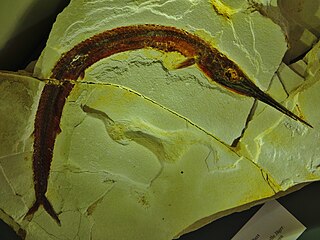
Belonostomus is a genus of prehistoric ray-finned fish that was described by Louis Agassiz in 1844. It is a member of the order Aspidorhynchiformes, a group of fish known for their distinctive elongated rostrums.

Apateodus is a genus of prehistoric marine ray-finned fish which was described by Woodward in 1901. It was a relative of modern lizardfish and lancetfish in the order Aulopiformes, and one of a number of prominent nektonic aulopiforms of Cretaceous marine ecosystems.

Dercetis is a genus of prehistoric marine ray-finned fish. It is the type genus of the family Dercetidae, a group of slender, elongate aulopiform fish, which were related to modern lizardfish and grinners. It is known from the Late Cretaceous of Europe, the Middle East, and western North America.
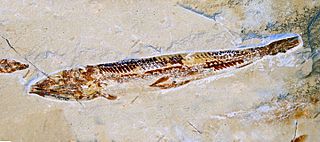
Prionolepis is a genus of prehistoric ray-finned fish belonging to the order Alepisauriformes.
Caproberyx is an extinct genus of marine acanthomorph ray-finned fish, possibly a holocentrid, from the Late Cretaceous.

Bananogmius is an extinct genus of marine ray-finned fish that was found in what is now North America and Europe during the Late Cretaceous, from the Cenomanian to the Santonian. It lived in the Western Interior Seaway, which split North America in two during the Late Cretaceous, as well as the proto-North Sea of Europe.

Aulolepis is an extinct genus of prehistoric marine ray-finned fish that lived from the middle Cenomanian to the late Turonian. It contains a single species, A. typus from the Chalk Group of the United Kingdom and the Hesseltal Formation of Germany.
Cryptoberyx is an extinct genus of prehistoric marine ray-finned fish that lived during the late Cenomanian stage of the Late Cretaceous. Two species are known from southern Europe and the Middle East, both part of the former Tethys Sea.
Acrognathus is an extinct genus of prehistoric bony fish belonging to the order Aulopiformes. Although no extensive systematic analysis has been performed, it is tentatively placed with the greeneyes in the family Chlorophthalmidae, making it the oldest representative of that family.
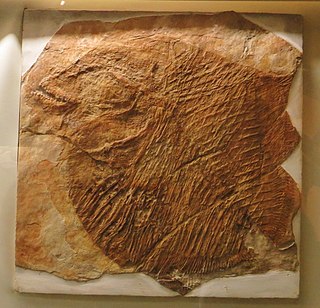
Coelodus is an extinct genus of marine and possibly freshwater pycnodont fish. It contains only one definitive species, C. saturnusHeckel, 1854, from the Late Cretaceous of Slovenia. Other species from the Late Jurassic to the Eocene have also been attributed to this genus based on isolated dental elements, but their assignment to Coelodus is uncertain, and this genus likely represents a non-monophyletic wastebasket taxon. A potential diagnostic trait is a prearticular tooth row with three regular highly elongated teeth.
Dinelops is an extinct genus of marine ray-finned fish from the Late Cretaceous. It contains a single species, D. ornatus, from the Cenomanian of England. It was initially and often continues to be classified in the Osmeroididae, a family of extinct elopomorph fish that are placed in either the Albuliformes or Elopiformes. However, other studies place Osmeroides in the Albuliformes and Dinelops in the Elopiformes.

Davichthys is an extinct genus of prehistoric marine ray-finned fish related to modern ladyfish. It is known from the Late Cretaceous of southern Europe, the Middle East, and North Africa. It is one of the earliest known elopids.

Cylindracanthus is an extinct, enigmatic genus of marine ray-finned fish with fossils known throughout North America, Europe, Asia and Africa from the Late Cretaceous to the late Eocene, with potential Oligocene records and a possible Miocene record also known. It is exclusively known from its distinctive partial remains, which are long cylindrical bony spines that are usually considered rostrum fragments, as well as some associated teeth. These spines are abundant & widespread throughout this timespan, and are useful indicators of a nearshore marine environment, but the taxonomic identity of the fish is still highly uncertain and debated.
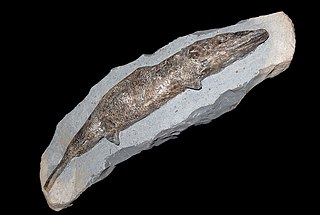
Crossognathiformes is an extinct order of ray-finned fish that lived from the Late Jurassic to the Eocene. Its phylogenetic placement is disputed; some authors have recovered it as part of the teleost stem group, while others place it in a basal position within crown group Teleostei. Other placements have found it to be paraphyletic, with the Varasichthyidae being stem-group teleosts whereas the other, "true" crossognathiforms are crown-group teleosts within the Teleocephala.
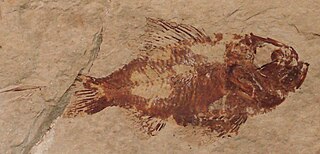
Ctenothrissiformes is an extinct order of prehistoric ray-finned fish.

The Sannine Formation, also called the Sannine Limestone, is a Cretaceous geologic formation in Lebanon. It is a Konservat-Lagerstätte that contains a high diversity of well-preserved fish, reptiles, and invertebrates from the Tethys Ocean within its three main localities: Haqel, Hjoula, and Nammoura.
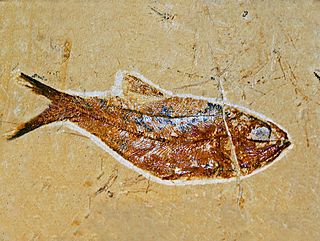
Armigatus is an extinct genus of marine clupeomorph fishes belonging to the order Ellimmichthyiformes. These fishes lived in the Cretaceous ; their fossil remains have been found in Mexico, Europe, the Middle East and North Africa, suggesting the genus ranged across the Tethys Sea.
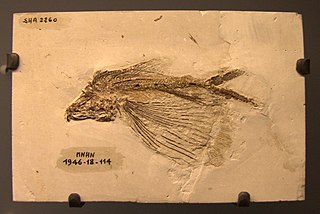
Cheirothricidae is a family of extinct marine ray-finned fish, perhaps belonging to the Aulopiformes, although they are tentatively placed as indeterminate eurypterygians. They lived during the Upper Cretaceous and their fossil remains are found in the Middle East and Europe. They were characterized by very expanded even fins.



















